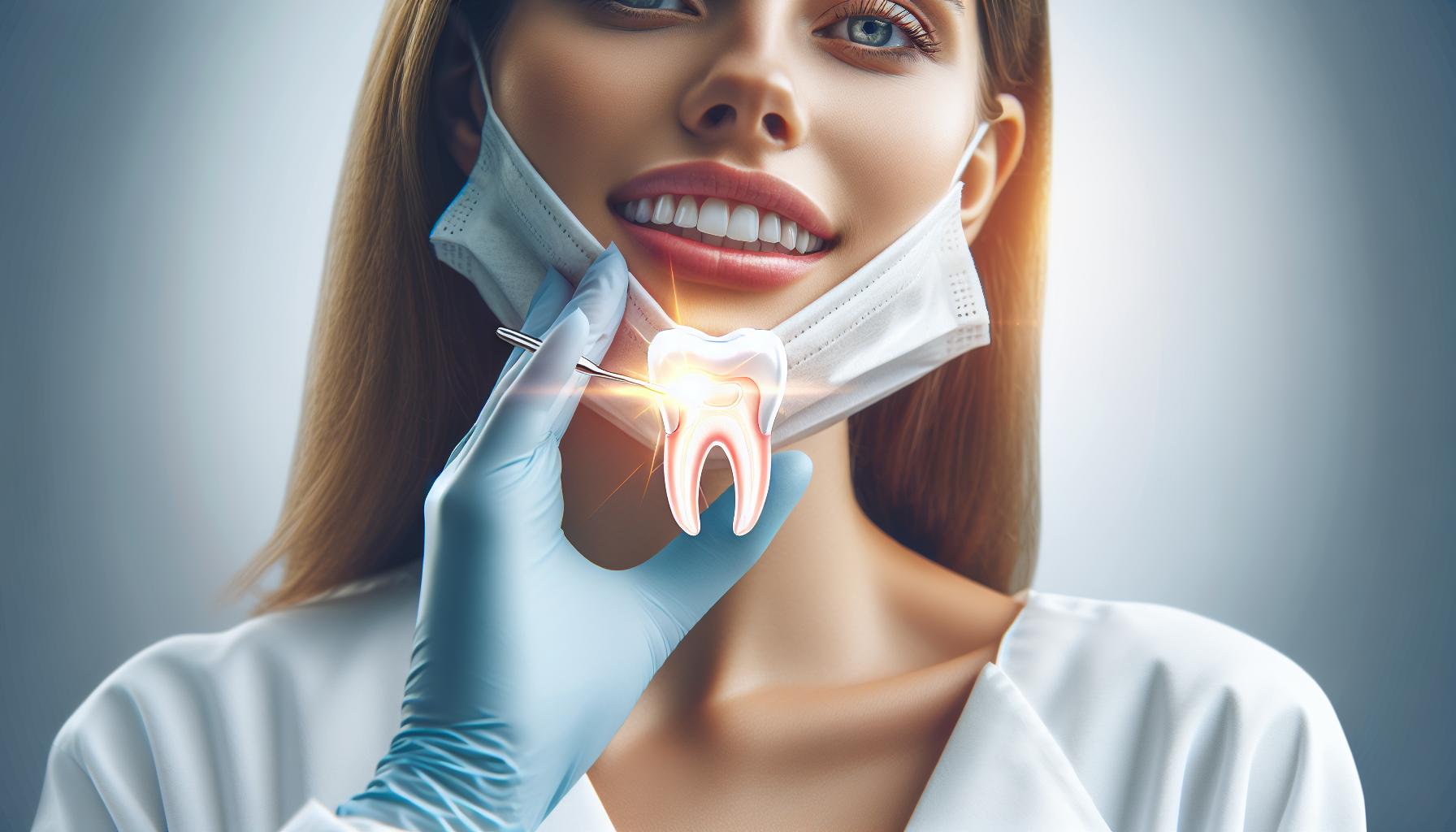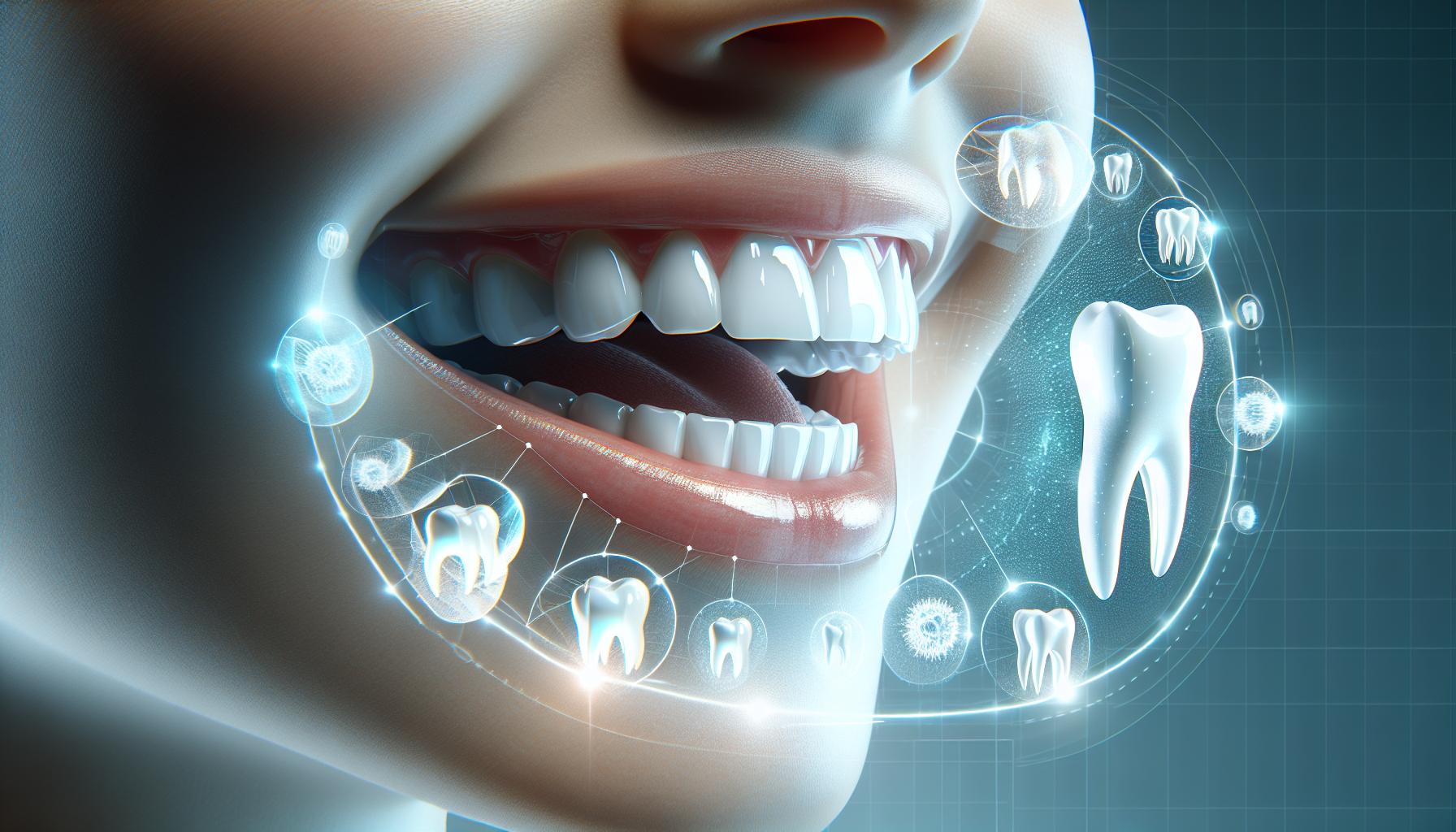Facing relentless tooth pain can be unbearable, frequently enough disrupting daily life and leaving you searching for relief. Understanding rapid, effective methods to numb that discomfort at home is essential, especially when a dentist visit may not be immediately possible. Explore natural remedies and simple techniques that provide fast pain relief without relying on medication, empowering you to manage your oral health confidently.
Understanding the Causes of Tooth Pain: What You Need to Know
Understanding the causes of Tooth Pain
tooth pain can manifest suddenly and be debilitating, affecting your ability to eat, sleep, and even concentrate. This discomfort can arise from a variety of underlying issues, each needing different approaches for management. Exploring these causes is crucial not only for effective pain relief but also for preventing future dental problems.
Common culprits include tooth decay, where bacteria erode the enamel and create cavities, leading to sharp or throbbing pain. Additionally, gum disease can result in inflammation and discomfort as the tissues supporting the teeth become infected. tooth sensitivity may also trigger pain when consuming hot or cold foods, indicating potential enamel erosion or exposed roots. In certain specific cases, tooth pain may stem from dental abscesses, wich occur when infections build up at the root of a tooth. Understanding these causes can guide you in selecting the best home remedies for temporary relief while prompting a visit to a dentist for long-term solutions.
When to Seek Professional Help
Not all tooth pain can be effectively managed at home. Recognizing when to consult a dental professional is crucial. Here are some signs that warrant a prompt visit:
- persistent Pain: If tooth pain lasts more than a day or two.
- Swelling: Noticeable swelling in your gum or cheek.
- Fever: Accompanied by other symptoms such as fever or malaise.
- Difficulty in Jaw Movement: Pain when opening or closing your mouth.
Addressing the root cause of tooth discomfort not only alleviates pain but also reduces the risk of complications like tooth loss or chronic infections. Simultaneously occurring, knowing how to numb tooth pain at home fast without medication can provide immediate relief while you await professional care.
Quick Relief Techniques: Home Remedies to soothe Your Toothache
Toothaches can feel debilitating, frequently enough transforming a normal day into a struggle filled with relentless pain. Fortunately, several effective home remedies can provide quick relief from tooth pain without the need for medication. Whether you are dealing with a cavity, gum irritation, or general sensitivity, these strategies are designed to alleviate discomfort while you await your dental appointment.
One of the oldest and most effective techniques is the salt water rinse. Salt has natural antibacterial properties, helping to cleanse the affected area and reduce inflammation.To prepare this remedy, mix a half teaspoon of salt in a glass of warm water, swish it around in your mouth for about 30 seconds, and then spit it out. This method not only provides immediate relief but also aids in promoting oral health.
Another option is to use cold compresses. Applying a cold pack to the outside of your cheek can help numb the area and reduce swelling. It is indeed advisable to keep the compress on for about 15-20 minutes at a time, giving your skin breaks in between to avoid frostbite. This technique is especially useful in cases of trauma or injury-induced toothaches.
For those seeking something more unconventional, consider clove oil. Cloves contain eugenol, a natural anesthetic and antibacterial compound. To use clove oil,soak a cotton ball in the oil and apply it directly to the painful tooth or the surrounding gum area. You’ll feel a soothing effect almost immediately. However, it’s notable to use clove oil sparingly, as excessive use can lead to irritation.
Here’s a quick summary of some effective home remedies for tooth pain relief:
| Home Remedy | Description |
|---|---|
| salt Water Rinse | A natural disinfectant that helps reduce inflammation. |
| Cold Compress | Numbs the area and reduces swelling by applying cold. |
| Clove Oil | Contains eugenol, providing a natural anesthetic effect. |
| Garlic | Acts as a natural antibiotic; chew raw garlic for relief. |
| Peppermint Tea | Soothes pain and inflammation; sip on warm peppermint tea. |
By implementing these home remedies, you can experience a significant reduction in toothache pain, allowing you to feel more comfortable while you seek professional dental care. Taking proactive steps with these natural methods is an essential aspect of managing tooth pain effectively.
Ice and Heat: The Best Practices for Numbing Tooth Pain
When tooth pain strikes, it can feel overwhelming. Though, many people find relief using simple techniques involving ice and heat. Understanding how to effectively apply these methods can not only provide immediate comfort but also buy you time until professional help is available.
Using Ice for Pain Relief
Ice therapy is a popular and effective method for numbing localized pain. Applying cold compresses has a numbing effect, which can temporarily reduce tooth pain by limiting blood flow to the affected area.
- Ice Packs: Wrap ice or a cold pack in a cloth and place it against the cheek near the painful area for 15-20 minutes at a time. This can help reduce inflammation and alleviate discomfort.
- Cold Water Rinse: Swishing with cold water can provide short-term relief as the cold can dull the nerve endings in your mouth.
Incorporating Heat for Comfort
Contrary to what you might think, heat can also play a role in pain management, particularly for muscle tension or jaw pain associated with tooth discomfort. Applying heat promotes blood flow and can help ease muscle tightness around the jaw.
- Warm Compresses: Use a warm towel or heating pad applied to the outside of the cheek. Limit this to about 20 minutes to prevent overheating.
- Warm Saline Rinse: Rinsing your mouth with warm salt water not only helps soothe discomfort but also assists in keeping the area clean, which can promote healing.
Best Practices for Alternating Ice and heat
For individuals seeking to maximize relief, alternating between ice and heat may be beneficial. Use ice initially to reduce swelling followed by heat to promote relaxation and blood flow. Be sure to allow your skin to recover between applications to prevent tissue damage.
| Method | Duration | Purpose |
|---|---|---|
| Ice Pack | 15-20 minutes | Reduce swelling and numb pain |
| Warm Compress | 15-20 minutes | Relax muscles and improve blood flow |
| Alternating Both | Varies | Maximize comfort and reduce pain |
These techniques are among the most accessible methods for managing tooth pain at home quickly without medication. Always remember, while these practices can provide temporary relief, they should not replace professional dental care for underlying issues.
Natural Ingredients That Work: Discover Effective Pain Relievers from your Kitchen
Discover Effective Pain relievers from Your Kitchen
Did you know that some common kitchen ingredients can help alleviate tooth pain without the need for medication? These natural remedies not only offer relief but also bring the comforting familiarity of home into your self-care routine. Whether you’re dealing with a persistent toothache or discomfort from new dental work, incorporating specific foods and spices can provide quick and effective numbing solutions.
- Clove Oil: This oil is well-known for its analgesic properties. Cloves contain eugenol, a natural compound that can numb pain and reduce inflammation. To use, soak a cotton ball in clove oil and apply it directly to the affected area for temporary relief.
- Salt Water Rinse: A simple salt water rinse can help reduce swelling and cleanse the area around a painful tooth. Mix one teaspoon of salt in warm water and swish it in your mouth for about 30 seconds. This practice not only soothes the gums but also can reduce the risk of infection.
- Garlic: Known for its antibacterial properties, garlic can help alleviate tooth pain. Crush a garlic clove and mix it with a pinch of salt, then apply it to the affected tooth. Its natural compounds can provide quick relief while fighting off potential infection.
- Ice: While not a kitchen ingredient per se, ice is readily available. Applying a cold compress to the outside of your cheek over the painful area can numb the pain and reduce swelling. Wrap ice in a cloth and hold it against your cheek for 15-20 minutes.
By turning to these natural ingredients, you can find effective ways to help numb tooth pain at home fast without medication. These methods are not only easy to implement but also allow you to treat discomfort with materials readily available in your kitchen. Remember, these remedies can provide temporary relief, and it’s critically important to consult with a dentist for persistent pain or serious dental issues.
Oral Hygiene Tips: Preventing Tooth Pain from Happening Again
Tooth pain can frequently enough feel overwhelming and debilitating, but understanding how to prevent it from recurring is essential. Good oral hygiene practices not only alleviate discomfort but also protect your teeth from decay and other issues that could lead to painful experiences in the future. By implementing a dedicated oral care routine, you can minimize your risk of tooth pain effectively.
Establish a Consistent Brushing routine
Brush your teeth at least twice a day using fluoride toothpaste. This essential step helps remove food particles and plaque, which can cause cavities and gum disease. To ensure you’re brushing effectively, follow these tips:
- Use a soft-bristled toothbrush to avoid damaging your enamel and gums.
- Brush for at least two minutes, allowing ample time for each quadrant of your mouth.
- Don’t forget to brush your tongue to eliminate bacteria that contribute to bad breath.
Floss Daily for Optimal Dental Health
Flossing might seem tedious, but it’s crucial for removing debris that brushing alone can’t reach. Flossing at least once a day helps in preventing plaque buildup between teeth and at the gum line, thereby reducing the chances of cavities and gum disease.
For those unfamiliar with proper flossing techniques:
- Use about 18 inches of dental floss, winding most of it around your middle fingers.
- Guide the floss gently between your teeth, forming a “C” shape to cover the tooth surface.
- Don’t forget to floss behind the last teeth, where decay often occurs.
Maintain Regular Dental Checkups
Visiting your dentist at least once a year is vital for preventive care. Regular cleanings and checkups allow for early detection of issues that can lead to painful conditions. Your dentist can provide guidance tailored to your specific needs, identifying any areas of concern before they escalate.
| Dental Care Task | Frequency |
|---|---|
| Brushing | Twice daily |
| Flossing | Once daily |
| Dental Checkups | Every 6 to 12 months |
Engaging in these practices not only helps you combat immediate tooth pain but also fosters long-term dental health. understanding effective methods on how to numb tooth pain at home fast without medication can only be truly beneficial if supported by a robust oral care routine. This proactive approach ensures that you do not have to deal with tooth pain again in the future. Always remember that prevention is the key to maintaining a bright and healthy smile!
When to Seek Professional Help: Recognizing Serious Dental Issues
Tooth pain can be a debilitating experience that affects your quality of life, making it imperative to understand when to seek professional help. While home remedies can offer temporary relief, there are moments when ignoring persistent symptoms can lead to serious complications. Knowing the signs of serious dental issues can save both your teeth and your overall health.
Recognizing Serious symptoms
There are several critical indicators that suggest it’s time to consult a dentist. If you experience any of the following, don’t hesitate to make an appointment:
- Severe Pain: Intense, ongoing pain that doesn’t subside with home treatments often signals a deeper issue, such as infection or nerve damage.
- Swelling and Inflammation: Swelling in your gums or face can indicate an abscess or severe infection that requires immediate care.
- Fever or Chills: Systemic symptoms like fever in conjunction with oral pain could suggest an infection spreading beyond your mouth.
- Difficulty Swallowing or Breathing: These symptoms can indicate a severe infection or allergic reaction that demands urgent attention.
When Home Remedies Fail
If you’ve already tried various methods for relieving tooth pain, such as cold compresses or clove oil, but with no success, it’s essential to consult a professional. While recommendations on how to numb tooth pain at home fast without medication can provide brief relief, they are not substitutes for proper dental care. For instance, a toothache that persists for several days, even after trying home remedies, is a red flag that your dental health is at risk.
Preventive Approach for Future Health
Understanding how to numb tooth pain at home fast without medication is valuable, but it is equally important to maintain a proactive dental care routine. Regular check-ups and cleanings can help catch potential problems early before they escalate.A well-rounded approach including a healthy diet,good oral hygiene practices,and awareness of dental hygiene can mitigate future issues.If any of these signs resonate with you, prioritizing a visit to your dentist is crucial. Ignoring dental discomfort could lead to further complications that complicate treatment and recovery.By being aware of your body and responding promptly,you can ensure a healthier,pain-free future.
Lifestyle Adjustments: Dietary Choices to Alleviate Tooth Discomfort
Did you know that the right dietary choices can play a significant role in alleviating tooth discomfort? While overcoming tooth pain often leads individuals to seek immediate numbing solutions, there are long-term lifestyle adjustments, particularly in diet, that can enhance oral health and potentially alleviate discomfort. By being mindful of what you eat, you can create an surroundings in your mouth that not only supports pain relief but also promotes overall dental well-being.
Foods to Embrace
Certain foods can definitely help reduce inflammation and promote healing in your gums and teeth. Incorporating these into your diet may provide significant relief from tooth pain:
- Leafy Greens: Vegetables like spinach and kale are rich in calcium and vitamins that strengthen teeth and gums.
- Fruits with High Water Content: Water-rich fruits such as watermelon, cucumber, and oranges help keep your mouth hydrated, aiding natural saliva production which is essential for protecting teeth.
- dairy Products: Yogurt and cheese not only provide calcium but also promote saliva production, creating a natural barrier against cavities.
- Nuts and Seeds: These are excellent sources of omega-3 fatty acids, which can reduce inflammation and can be beneficial when dealing with discomfort.
Foods to Avoid
Just as critically important as what you include in your diet is what you exclude. Certain foods can exacerbate tooth pain or lead to further dental issues:
- Sugary Snacks and Drinks: These can feed harmful bacteria in your mouth, leading to dental decay and increased sensitivity.
- Hard, crunchy Foods: Items like hard candies or chips can aggravate existing dental issues and even cause new problems.
- Highly Acidic Foods: Citrus fruits and vinegar can erode enamel, making your teeth more sensitive and increasing pain.
Hydration Matters
Staying hydrated is essential. Drinking plenty of water throughout the day helps rinse away food particles and bacteria, reducing the likelihood of decay. Furthermore, drinking herbal teas, particularly those with anti-inflammatory properties like chamomile or ginger, can provide calming effects not only for your body but also for painful gums.
| Food Type | Benefits |
|---|---|
| Leafy Greens | rich in calcium and vitamins for strong teeth |
| Fruits | High in water content to support hydration |
| Dairy Products | Natural source of calcium and promotes saliva |
| Nuts | provides omega-3 fatty acids, reducing inflammation |
| Sugary Snacks | Increases risk of decay and tooth sensitivity |
| hard Foods | Increases risk of damaging already sensitive teeth |
| acidic Foods | Can erode enamel, worsening tooth pain |
By adjusting your diet to focus on tooth-friendly foods and avoiding those that could trigger pain, you can explore how to numb tooth pain at home fast without medication. Implementing these changes not only fosters a healthier mouth but may also substantially diminish episodes of discomfort, paving the way for better oral health in the long run.
Stress and Tooth Pain: The mind-Body connection You Shouldn’t Ignore
Stress can manifest in numerous ways, and surprisingly, one of them may be discomfort in your teeth. Many individuals are unacquainted with the intimate connection between our mental state and physical well-being, particularly when it comes to oral health. Understanding this relationship is essential for effectively managing tooth pain, especially if you prefer alternatives to medication—like the strategies discussed in guides on how to numb tooth pain at home fast without medication.
The Link Between Stress and Tooth Pain
When stress levels rise, the body reacts in various ways, including muscle tension and increased grinding of the teeth, known as bruxism. This involuntary behavior can lead to significant discomfort and sensitivity, exacerbating existing dental issues. Here are some immediate effects of stress on your oral health:
- Teeth Grinding: Many people clench their jaws or grind their teeth when under pressure,which can lead to worn enamel and tooth pain.
- Gum Disease: Stress can weaken the immune system, making gums more susceptible to infection.
- Reduced Saliva Production: Stress can also lead to dry mouth,increasing the risk of cavities and discomfort.
Recognizing Signs and Seeking Relief
Being aware of how stress influences tooth pain is the first step in addressing the issue. If you find yourself experiencing increased pain or sensitivity, consider these strategies for immediate relief without resorting to medication:
- Warm Compresses: Applying warmth to the jaw can soothe tense muscles and alleviate pain.
- Relaxation Techniques: Engaging in activities like deep-breathing exercises or yoga can lower stress levels, which may, in turn, help reduce teeth grinding.
- Mindfulness Practices: Practices such as meditation can significantly decrease stress,which could help improve overall oral health.
Complementing these techniques with effective home remedies for relieving tooth pain—such as saltwater rinses or clove oil applications—can create a holistic approach to managing discomfort.By recognizing and actively addressing the mind-body connection,you take proactive steps towards not only alleviating tooth pain but also enhancing your overall quality of life. Each strategy offers dual benefits—relieving discomfort while also reducing stress, helping you to break the cycle of pain and anxiety.
FAQ
How to Numb Tooth Pain at Home Fast Without Medication?
To numb tooth pain quickly at home without medication, try using cold compresses, clove oil, or saltwater rinses. These methods can provide temporary relief by reducing inflammation and numbing the affected area.
Applying a cold compress to your cheek near the painful tooth can decrease swelling and numb the area. Alternatively, oil of clove contains eugenol, a natural pain reliever, which can be applied directly to the tooth. A warm saltwater rinse is also effective in soothing sore gums and preventing infection.
What is an effective natural remedy for tooth pain?
One effective natural remedy for tooth pain is clove oil. It contains eugenol, which has natural analgesic properties that help relieve pain.
To use clove oil, soak a cotton ball in the oil and apply it directly to the affected area. Remember to use it sparingly as it is indeed potent. For more home remedies,consider reading about natural tooth pain management options.
Can I use ice to numb tooth pain?
Yes, using ice can effectively numb tooth pain. Apply a cold pack or a wrapped ice cube to the outside of your cheek for relief.
This method reduces blood flow, which can help ease the pain sensation. Remember to limit application to about 15-20 minutes to prevent skin damage.
Why does tooth pain occur?
Tooth pain can occur due to various reasons, including cavities, gum disease, or tooth fractures. Understanding the cause may help determine how to address the discomfort.
In some cases, exposed tooth nerves or infections may contribute to pain as well.If the pain persists, it’s crucial to seek professional dental advice to address any underlying issues.
How to use saltwater to relieve tooth pain?
A warm saltwater rinse can help relieve tooth pain by reducing inflammation and cleaning the affected area. Mix one teaspoon of salt in a cup of warm water and swish it around your mouth for 30 seconds.
This method not only provides temporary relief but also helps in healing and preventing infections. Incorporate this into your oral care routine to maintain gum health.
Can I use hydrogen peroxide for tooth pain relief?
Hydrogen peroxide may provide some relief from tooth pain due to its antibacterial properties. A diluted solution can help alleviate discomfort and disinfect the area.
Mix equal parts of hydrogen peroxide and water, swish it around for about 30 seconds, and then spit it out. Do not swallow it, and remember that this is a temporary measure before seeing a dentist.
Are there any over-the-counter options for tooth pain?
Yes, over-the-counter options like benzocaine gels and oral pain relief cushions can provide immediate temporary relief for tooth pain.
These products numb the area and can be effective while waiting for dental intervention. However, it’s advisable to consult with your dentist for proper diagnosis and treatment.
Final Thoughts
managing tooth pain at home quickly and effectively can be accomplished with a variety of natural remedies and techniques. From the numbing properties of topical treatments like Anbesol Gel to the soothing effects of clove oil, there are multiple options that can provide temporary relief. It’s essential to listen to your body and recognize when professional dental care is needed, as some issues may require more than just at-home solutions. We encourage you to explore these methods further and take proactive steps to find what works best for you. Remember, self-care is vital, but don’t hesitate to reach out to a dental professional if your pain persists or worsens.Your oral health is important,and you’re empowered to take action!









